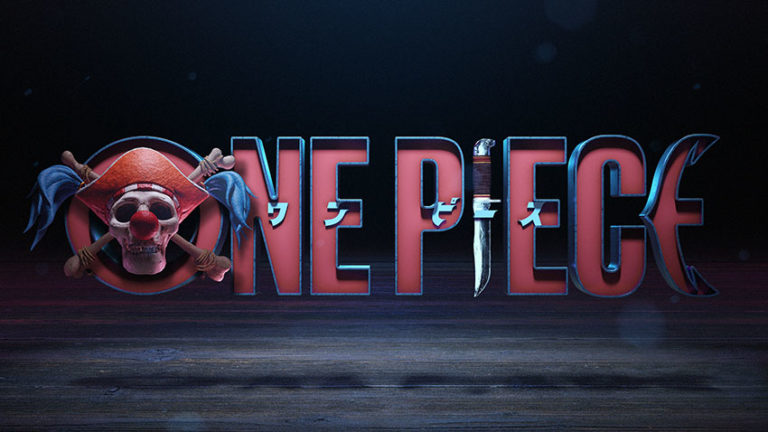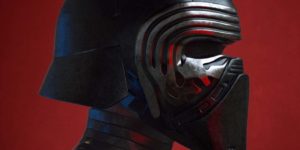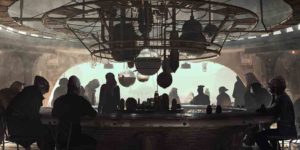- Background and Inspiration
- Creative Process
- Style and Themes
- One Piece – Main Title Design
- Challenges and Achievements
- Advice for Aspiring Artists
- Future Goals
- Conclusion
Meet Michael Lo, a Concept Artist and Designer who’s about to take you on a thrilling ride through the digital art landscape. Growing up in an artistic household, Michael’s childhood was filled with drawing and painting lessons from his art instructor dad.
However, it was the enchanting world of designing for films and games that truly captured his heart, setting him on the path to becoming a concept designer. His love for visual storytelling was kindled by a childhood spent devouring movies and TV shows, where he drew inspiration from artistic legends like Roger Deakins.
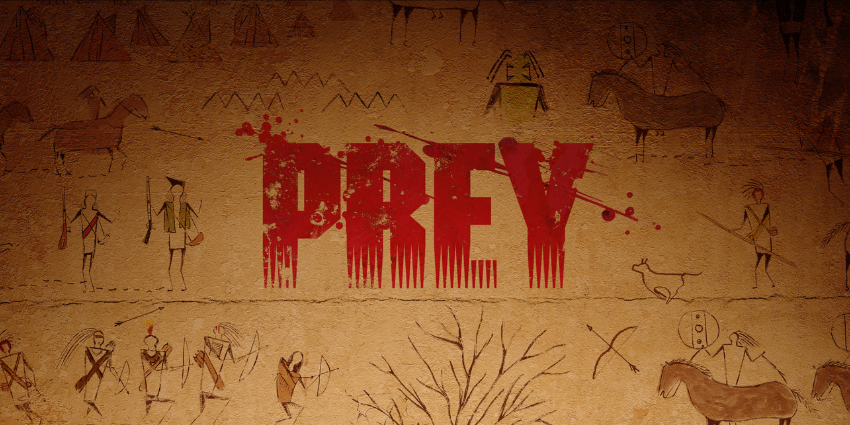
PREY
In this interview, Michael unravels his creative process, emphasizing the importance of solid reference material and his favorite tool, Photoshop. And when it comes to staying motivated and breaking through creative blocks, he candidly admits that sometimes it’s all about that good old trial-and-error approach.
Join us as we journey through the captivating world of digital art with Michael Lo, a visionary artist and designer whose passion and dedication continue to redefine the art of visual storytelling.
Background and Inspiration
- Can you tell us a bit about your journey into digital art?
For starters, I grew up in an artistic household. My dad was an art instructor, so at a young age, I was already learning to draw and paint. But once I discovered you could design for films and games as a career, I knew being a concept designer was something I wanted to do.
- What inspired you to become a digital artist?
Films and television shows were a huge part of my childhood. I grew up as an only child, so they were one of the only ways to keep me entertained at home as a kid.
And from watching A LOT of movies (often the same ones over and over) I fell in love with visual storytelling. All I wanted to do was to tell stories through composition, lighting, etc.
- Who are some of your artistic influences and favorite artists (digital or otherwise)?
Painters like Frank Frazetta and Syd Mead were big ones growing up. Filmmakers like Kubrick, Antonioni, Paul Thomas Anderson, and Denis Villeneuve come to mind as well, to name a few. I was obsessed with cinematographer Roger Deakins’ work at one point as well. They just have an amazing ability to tell complex stories through their shots.
Creative Process
- Could you describe your typical creative process from ideation to completion?
Usually, my process starts with trying to find really good reference. I worked with Patrick Clair while I was still in school as his visual research assistant, which really drilled into my brain that the quality of research and reference images you use directly inform the quality of what you end up designing. So I like to start there.
As for execution, I start in Photoshop to paint or comp something together, and if it turns out that the design would benefit from 3D, I’ll jump into Cinema4D—then ultimately go back into Photoshop to paint over and touch things up.
- Do you have any favorite software, tools, or techniques that you rely on in your work?
Photoshop has to be my favorite since my background is in digital painting. Apart from being an all-purpose design/painting tool, it’s also the fastest way for me to churn out ideas. Even if I need to work in 3D on a project, I always find myself back in Photoshop by the end to refine shots.
- How do you stay motivated and overcome creative blocks?
It doesn’t sound very healthy but sometimes I just have to metaphorically bang my head against the wall until something breaks through. Oftentimes for every design I present there are 10 horrible ideas that they don’t see. It’s very much a trial and error process for me.
Style and Themes
- Many digital artists have a unique style. How would you describe your artistic style and the themes you often explore in your work?
I don’t think I’ve consciously set out to develop a style? Though I’ve had friends tell me they know something is mine just from looking at the work. So I guess there’s something there!

Wednesday
If I had to describe my style I would say ‘cinematic’ or ‘subtle’ as I really love composition and dramatic lighting. But my approach to professional work has always been to do what feels right for the project.
- Is there a recurring message or story you try to convey through your designs?
It sounds clinical, but any message or story in my design work I try to make in service of the client/project at hand.
One Piece – Main Title Design
- Let’s dive into a specific project of yours. Can you share some details of the One Piece – Main title Design?
Sure! I guess the most obvious thing is that all the One Piece title lockups from each episode of the season are unique and that they point to characters that play pivotal roles in each episode. And these designs were inspired by both the characters themselves, as well as their flags or “Jolly Rogers” that appear in the manga.
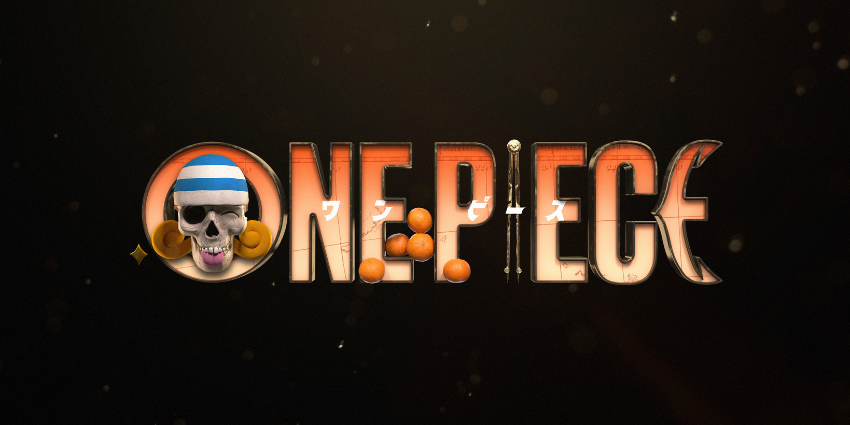
One Piece
What might be less obvious, though is that we also designed the maps that appear at the end of each episode as well! Those too, are episode specific—in that episode, one starts with a blank map and as the story progresses through the season and the crew sails through the ‘East Blue’ more and more islands are drawn on.
We were very aware that One Piece has a deeply passionate community of fans (myself included), so we spent a lot of time researching to make sure what we were creating respected the lore.
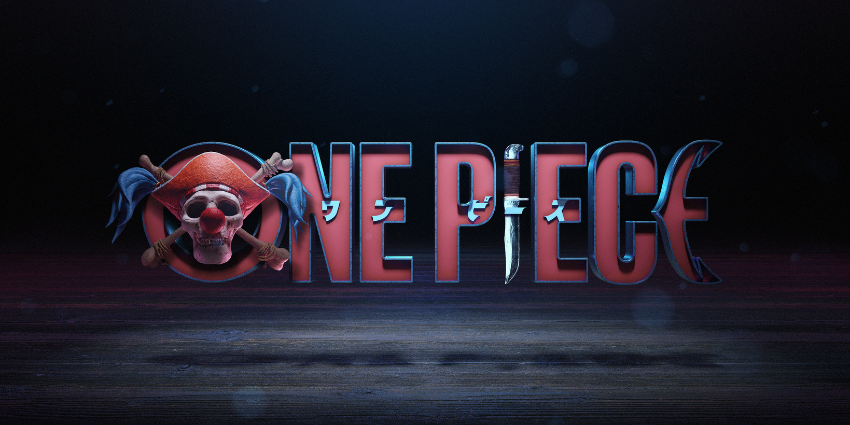
One Piece
- What is the story behind this project, and how did you get involved with it?
I’ve been Freelancing with the team at Filmograph for a while now and have worked on a bunch of projects with them, like The Haunting of Bly Manor, Wednesday, and Prey, to name a few. And they were kind enough to give me the opportunity to be the designer on this!
- Can you describe the key elements and techniques used in this project?
The challenge for us was interpreting elements from the manga and bringing it into a 3D world. The audience also had to see the episode’s One Piece lock up and immediately recognize it as representing a certain character from the show.
We initially designed everything in Photoshop, then once we had the design locked, I built the lockup in Cinema4D. I also worked back and forth with Eric Keller, an amazing sculptor, to create each of the skulls and props. Then at the end, our animator/compositor Ricky Elizondo took the assets we made and brought them to life.
Challenges and Achievements
- Every artist faces challenges. Can you tell us about a specific artistic challenge you’ve overcome and how you did it?
Well, until college, all I knew was drawing and painting, so learning to design in 3D space really was a paradigm shift for me. It was my first step at learning and utilizing a new medium in my workflow to create designs. It was difficult at first, but it taught me to think about design differently.
- What’s been one of your most significant achievements or milestones in your artistic journey so far?
Probably, the fact that I was able to make all of this a career [laughs]. The first time a company or studio offered me a gig, I was like, maybe this wasn’t a mistake. That was a good feeling.
Advice for Aspiring Artists
- What advice do you have for aspiring digital artists who are just starting their creative journey?
I think it’s important also to explore and utilize any tools or mediums at your disposal that can best help you achieve the result you want.
Most important, though is to have strong fundamentals and develop an eye for what design works and what doesn’t. You can execute the most advanced complex technical 3D thing ever, but if your design doesn’t work for the project from the start, none of that really holds water.
- How do you balance your artistic pursuits with other aspects of life, like work and family?
Like I mentioned earlier, I grew up in a creative environment, so there was never a very clear line between art/design and just life in general. But there definitely is a clear line between working and not working, so I try my best to leave any stress or frustrations from work at the desk …Sometimes I’m not the best at that haha.
Future Goals
- What are your future artistic goals, or is there a particular project or theme you’d like to explore in the future?
I think a consistent goal for me has always been to just improve and more recently evolve as an artist/designer. As the entertainment industry keeps changing there’s always new tools and workflows to learn/experiment with, so it’s never boring.
- Do you have any upcoming exhibitions, collaborations, or projects you’d like to share with your audience?
There’s a few projects coming out later this year and next year that I’m excited about but can’t share them with you just yet.. I will when I can, so keep an eye out! 🙂
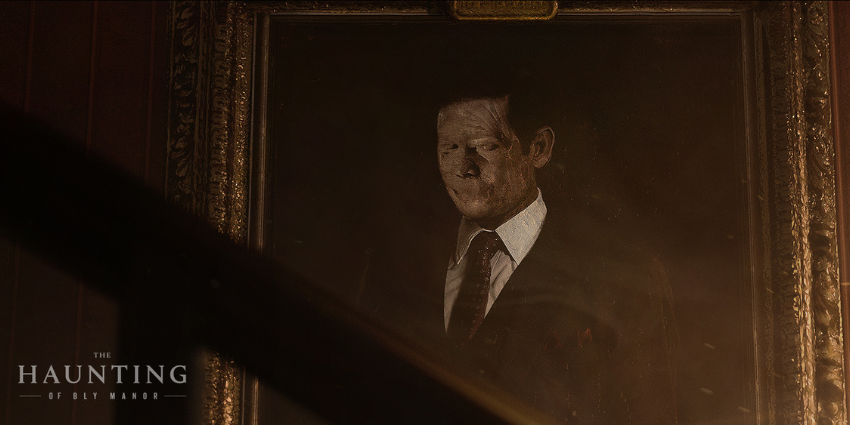
The Haunting
Conclusion
In conclusion, Michael Lo’s story is a testament to the transformative power of digital art and the unwavering dedication of artists who push the boundaries of their creativity. Through his words, we’ve gained insight into the meticulous process, the tools, and the determination that fuel his artistic endeavors.
If you’d like to explore more of Michael’s remarkable work, you can visit his website and check out his stunning portfolio on Behance. These platforms offer a deeper glimpse into the captivating world he has created, where imagination meets digital artistry.
Vanessa is a Digital Marketing Specialist specializing in SEO, Social Media, and WordPress Administration, effectively bridging technology and online visibility.
